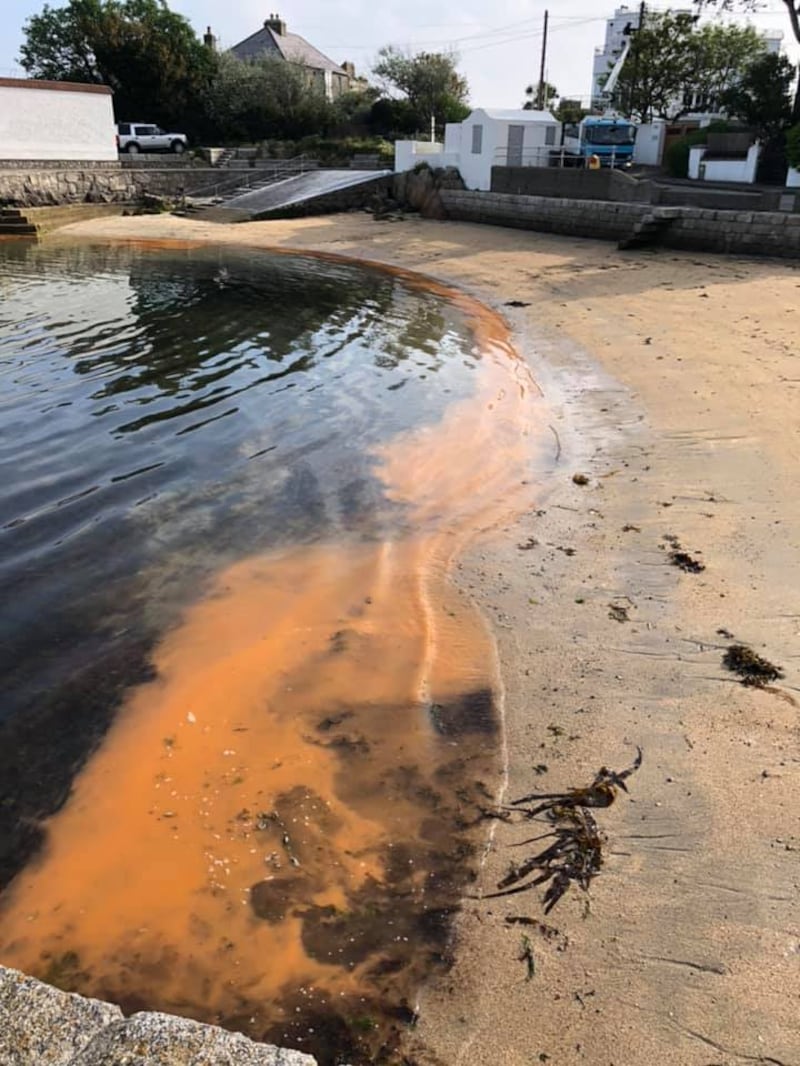Orange-coloured water that has appeared at the Sandycove bathing spot in south Co Dublin is the result of algae rather than a sewage spill, Dún Laoghaire-Rathdown County Council has said.
Prohibition notices have been issued for a number of beaches along the south Dublin coast this week following overflow discharges of wastewater from water treatment plants after heavy rain on Sunday and Monday.
Responding to media and social media reports about the discoloured water possibly being linked to the wastewater, the council said: “(Test) results this afternoon show that this is not raw sewage but is a micro-alga called Noctiluca scintillans. This is a benign, non-toxic, species – the ‘blooms’ are characteristically yellow, orange or orange/red.
“The appearance of this algal bloom is not directly associated with the wastewater overflows associated with the temporary bathing prohibition. We have been advised that this is a natural summer phenomenon in response to long day length, high nutrients and warm water.”

Joe Silke, of the Marine Institute, said “these blooms have been reported along the east coast of Ireland for the past few weeks and are typical for this time of the year.”
The county council is due to announce by Thursday whether it will lift the temporary bathing notices at Seapoint, Sandycove and the Forty Foot, which were implemented on Monday.
Underinvestment
Irish Water said the swimming bans at these locations, as well as Dollymount strand, were the result of years of underinvestment in treatment facilities and pumping stations. A similar ban was put in place at the start of the month after a sewage overflow at Irish Water’s Ringsend treatment plant.
John O’Donoghue, Irish Water’s regional operations manager, said the underinvestment had left Irish Water “playing catch up” and that a “huge amount” of investment was needed to bring the system up to speed.
He said the “controlled overflow discharge” of wastewater from the Ringsend plant was “the lesser of two evils”. Asked to elaborate on this assertion, an Irish Water spokesman said the greater of two evils would have been the sewage backing up through the city’s drains.
Minister of State for Planning Damien English told the Dáil that “the guts of €2 billion” would be invested to upgrade the water infrastructure in areas affected by the discharge.
Sinn Féin TD Eoin Ó Broin said the bathing ban followed the revelation in February by the Environmental Protection Agency (EPA) that “raw sewage from the equivalent of 86,000 people was flowing into our waterways every day”.
He said the State was facing infringement proceedings from the European Commission due to its failure to invest adequately in our wastewater treatment facilities and he asked what was being done to deal with and avert this bill.
Mr English said there were detailed plans to upgrade the State’s water infrastructure. “Naturally, the two local authorities involved are working together with the EPA to see whether any interim measures can be taken to prevent and deal with this”.














